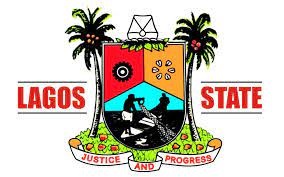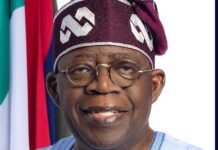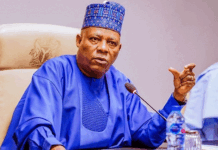-As state disbursed N859 million to 1,271 MSMEs in 2023
Chigozie Amadi
Despite economic challenges in the country, Lagos State has recorded a quarterly total revenue size of ₦433,408bn budget performance.
The performance which represents a 92% is as a result of strategic planning carried out to expand the tax net especially in the informal sector.
This was disclosed by the State Commissioner for Economic Planning and Budget, Mr Ope George during a ministerial press briefing to mark the second term in office of the State Governor, Mr Babajide Sanwo-Olu in office at Alausa, Ikeja.
George added that the total Recurrent Expenditure performed at 80% which represents ₦189,624bn.
The total capital expenditure recorded a performance of 54% / ₦178,728bn.
The total expenditure (budget size) recorded a performance of 65% / ₦368,352.
According to him, “The Y2024 Budget aligns with the THEMES + agenda and is crafted to solidify the developmental accomplishments of this administration with primary focus on the conclusion of ongoing projects such as the Blue and Red Line Rail System, Stadia, Lekki-Epe Road, New Massey Children Hospital, Opebi-Mende Link Bridge, etc.
“It is also geared towards ensuring that every endeavour, investment, partnership, and policy translates effectively into tangible positive outcomes in the lives of Lagos residents and its environs.
Total Budget size of ₦2.267 trillion was approved and signed into law by the Governor on 15th January 2024.
The approved Y2024 Budget has a total revenue of ₦1.880 trillion, Deficit Financing of ₦387.125bn; Capital Expenditure of ₦1.315trn and Recurrent Expenditure of ₦952.431bn (including Debt Charges), establishing a Capital to Recurrent ratio of 58:42.
Giving a sectoral analysis of the budget, he explained that the budget size Function Group Disaggregation and percentage reflects Government priorities, sustenance of past trend and needs assessment of the governed.
General Public Services, Recurrent-300,737,513,329, Capital- 149,323,497,192, total-450,061,010,521 representing 19.8 percent.
Public Order and Safety, Recurrent- 54,340,706,602, Capital-36,142,506,513, total-90,483,213,115 representing 4.0 percent.
Economic Affairs, recurrent, 98,337,468,513, capital, 479,640,888,937, total, 577,978,357,450 representing 25.5 percent.
Environment, recurrent 40,055,346,322, capital, 50,831,186,108, total, 90,886,532,430 representing 4.0 percent.
Housing and Community Amenities, recurrent, 16,920,308,320, capital, 39,004,683,545, total, 55,924,991,864 representing 2.5 percent.
Health, recurrent, 127,781,385,417, capital, 32,839,593,114, total, 160,620,978,531 representing 7.1 percent.
Recreation, Culture and Religion, recurrent, 29,099,289,349, capital, 12,633,454,518, total, 41,732,743,868 representing 1.8 percent.
Education, recurrent, 129,833,990,730, capital, 50,859,625,804, total, 180,693,616,534 representing 8.0 percent
Social Protection, recurrent, 34,630,323,332, capital, 4,467,851,220, total, 39,098,174,552 representing 1.7 percent
STATEWIDE, recurrent, 120,694,235,085, capital, 459,802,266,920, total, 580,496,502,005 and represnt 25.6 percent.
Contingency Reserve (Including Special Expenditure-State-wide and Special Expenditure-Others), recurrent, 5,246,864,340, capital, 27,433,267,504, total 32,680,131,844 representing 1.4 percent.
Loans (Repayments, CDSA & Debt Servicing), 367,892,924,571, representing 16.2 percent.
Personnel Cost (Service wide and Pension), 115,447,370,745 representing 5.1 percent.
Grants & Counterpart Fund, 64,476,074,845 representing 2.8 percent.
GRAND TOTAL gives recurrent as 952,430,566,998, while capital is 1,315,545,553,871 and overall 2,267,976,120,869, represent 100 percnet.
The Commissioner reotery, “The Ministry has continuously prioritised the use of the National Chart of Accounts for Budget Preparation and Implementation Report. This is to conform to the standard of reporting by all States in the Federation.”
Meanwhile, the Lagos State Commissioner for Wealth Creation and Employment, Hon Akinyemi Ajigbotafe through the ministry intervention loan Programme, the state has disbursed N859 million to 1,271 MSMEs in 2023.
The Commissioner, who also disclosed this during the ministerial briefing said the initiative helped these businesses grow, creating 51, 822 direct and indirect jobs in the state.
The Lagos State Employment Trust Fund was established by the Lagos State Employment Trust Fund Law 2016, to tackle unemployment and promote entrepreneurship in Lagos State; by empowering its residents with job and wealth creation opportunities.
The Fund pursues its objectives through strategic collaborations and funding support from partners like development finance agencies, corporate organizations and individuals.
MSME Loan Programme: An initiative aimed at providing access to affordable finance for small businesses to launch, scale up, build wealth and create jobs. The loan scheme, which attracts a 5-9% interest rate per annum, is available to business owners who are registered residents of Lagos State.
According to the Commissioner, “A series of programmes designed were designed by the ministry to bolster the tech ecosystem in Lagos with the provision of workspace vouchers, hub loans, startup incubation management, and talent development opportunities.
“The Lagos COVID-19 Action Recovery and Economic Stimulus (CARES) Program: A state level intervention created to mitigate the harsh socioeconomic impact of the COVID-19 pandemic on Lagos-based businesses through the provision of credit, operations and IT enhancement grants
“The Job Hub Project: A programme geared towards reducing the barriers to entry faced by early stage businesses in Lagos State by providing access to infrastructure, equipment, centralized payment system, peertopeer engagements that facilitate business growth across diverse sectors.
“Lagos Cares: Lagos Cares is a World Bank Sponsored intervention designed to cushion the effects of the globo! pandemic on the continuity and sustainability of MSMEs in Lagos State. Through the intervention, we supported 1,425 MSMEs with grants worth N358 million across the three disbursement-linked indicators — cred# operations and IT enhancement.”





















